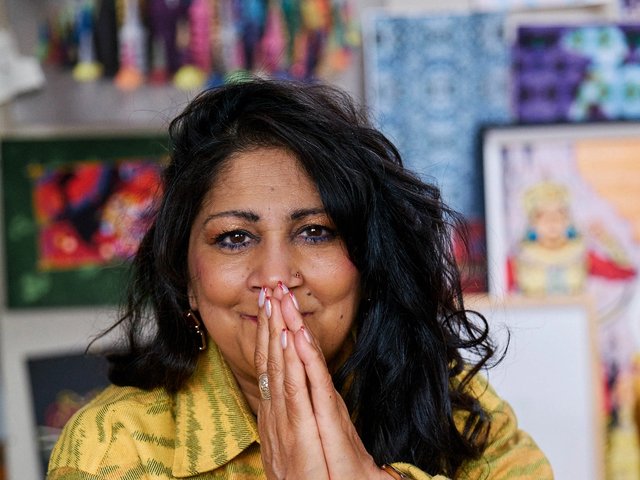I first met Peter Moores in 1994 when I was the director of the Dulwich Picture Gallery in London. We had just announced that the gallery was no longer viable financially and needed an alternative solution. The announcement aroused much interest among prominent philanthropists, which was why Moores invited me to his office.
It was an odd meeting. As I arrived, he said, “I won’t offer you any coffee. You smell of coffee already.” Nonplussed, I explained the situation. “You don’t seem to know what you want,” he said, and when I repeated myself, he said, “No, you obviously have no idea.”
This approach was characteristic. Moores was socially awkward, especially with strangers, and ably concealed the goodness of his heart—though not from his personal staff, who were strongly attached to him. He was an individualist, and ruffling people was an element of that individualism. Although the Eton education, the purchase and restoration of Parbold Hall, his country house in Lancashire, the BBC governorship, all apparently allied him with the establishment, he disliked convention, as his patronage showed.
When his associates talk about Moores, they always mention his father, John. He was the founder of Littlewoods, the department store chain, and was famous not only as a brilliant entrepreneur but as a philanthropist: a champion of Liverpool John Moores University, and the founder of the John Moores Painting Prize. He believed in keeping his staff in their place: according to one anecdote, a lunch guest at his office in Liverpool commented on the suited middle-aged waiters. “Oh,” said Moores senior, “those are my senior executives. I believe in showing them where they belong.” Peter succeeded him as the chairman of Littlewoods in 1977, but as profits fell he was removed from the chairmanship by his father, although he remained on the board.
Wealthy but prudent Peter Moores was extremely rich. Whether this made him happy may be doubted. As a collector, he resembled such plutocratic founders of museums as Walter Burrell and J. Paul Getty in hating overspending. He distrusted art dealers: auctions revealed the true price. This prudence meant that he sometimes missed what was really good. On the other hand, his collecting on behalf of Compton Verney, the 18th-century house he bought in 1993, was motivated by his passion for things that had inspired him at various times: an outstanding collection of Chinese bronzes; early German art (which he had learnt to love in the late 1940s); Neapolitan art (selected because of his former Neapolitan wife Luciana Pinto, and also because it was less expensive than other Italian schools); and portraits of English kings and queens, acquired for educational purposes. The Kalman British Folk Art Collection was bought to save it from dispersal and now forms one of Compton Verney’s most distinguished elements. Though folk art did not engage his sympathies, this acquisition led to the bequest of the Marx-Lambert Collection in 1998.
Moores was a notable patron of opera, a medium he adored. For Rupert Christiansen, the opera critic of the Daily Telegraph, he was “the most enlightened of sponsors, blessed with a connoisseur’s appreciation of the art form and a keenly intelligent nose for the good cause. His foundation worked strategically to enrich and extend our horizons, investing long term in projects such as Opera Rara or the Opera in English recordings, without resorting to the micro-managing interference that is often the price paid for donations.”
A gallery like no other In 1993 Moores was asked to support the establishment of an opera house in the Capability Brown park of a country house in Warwickshire that was on English Heritage’s Buildings at Risk register. Instead, he bought the whole property. One attraction of Compton Verney was its location, beautifully rural but geographically central and close to conurbations. When the building was restored, Moores stipulated that it must be seen not as a country house but as a neutral art gallery. A gallery for temporary exhibitions was added, binding together the existing buildings.
When I worked briefly as Moores’s curatorial adviser in the late 1990s, he outlined his vision for the place. Compton Verney was to be a gallery like no other, a place where people normally intimidated by art galleries would feel at home. There would be comfortable sofas and a welcoming atmosphere. He wanted to share the opportunities that he had enjoyed with as many people as possible, and to encourage them to explore art and look for themselves—even though Neapolitan paintings and the rural location are not notably accessible. His vision did not go much further, but it was a fine one, and it was supported with lavish donations from the Peter Moores Foundation.
In 2010, the situation at Compton Verney changed. The gallery was given an endowment to maintain the historic fabric and grounds—and otherwise required to look after itself. Under its current director, it has been remarkably successful: establishing itself as a major example of that newish type, the rural museum; raising funds; hosting interesting exhibitions; and attracting some 70,000 visitors a year.
Moores, who died on 23 March, aged 83, resisted pressure to apply his own name to the gallery. That was not what he wanted, any more than he wanted to be remembered through the survival of the Peter Moores Foundation, which was wound up in 2014. He was, in his way, a modest man. Giles Waterfield
• Sir Peter Moores, born 9 April 1932, died 23 March 2016



